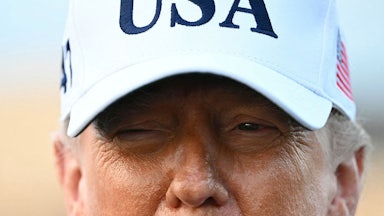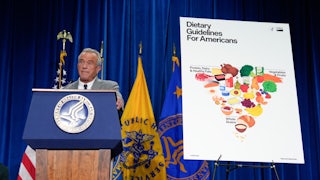I can’t remember the last time I saw a monarch butterfly. I remember chasing them as a child—how I’d catch a glimpse of fluttering stained-glass wings and race after, reaching up to join their zig-zagging flight. I remember it being a moment of real joy. But I don’t remember it being particularly special. Growing up, these encounters were practically an everyday summer occurrence.
I recall them while looking down at my son, who at five months old is starting to engage with the animals of his small world, especially our tough old mutt, Dottie. He reaches out to grab a fistful of Dottie’s loose skin while she lazes beside him. She barely notices, but I move to disentangle his clumsy fingers from her fur anyway, before he yanks too hard.
Then I Google “monarch butterfly decline.” I read that the monarch population in the eastern United States has fallen at least 80 percent since the mid-1990s. The western population is down to fewer than 2,000 butterflies, just a step away from extinction. Through climate change and habitat destruction, we are wiping them out.
I turn back to my son on his play mat, fastidiously stuffing a plush blue elephant into his mouth. I’m embarrassed to find tears in my eyes. It feels like an overreaction. In the world of crisis and plague and uncertainty he is inheriting, through the smoke and flames of the Anthropocene, it seems almost crass to mourn the absence of butterflies for my son to chase.
Indeed, the devastation that global warming is causing the wild creatures of this planet has long seemed, to me, like an arena of loss that is off-limits for grief. Like most people engaged in the climate movement, I’ve spent a lot of time repeating that climate change is a crisis for humanity. For years we’ve been tacking a preface on all our advocacy efforts: We are not fighting to save starving polar bears on melting ice floes. We’re fighting for grandparents trapped in flooded nursing homes, laborers collapsing in the baking sun, families fleeing from wildfires or hurricanes, refugees trying to escape drought and water war. Your children and mine, me and you.
This is an important, long-overdue shift from the conservation-focused environmental narrative of prior decades. Together, frontline communities fighting for their lives, organizers pushing the climate movement to center economic and racial justice, and increasingly severe natural disasters have managed to refocus the climate conversation on the only story powerful enough to compel our sickened institutions to take real climate action: The climate crisis isn’t about charismatic megafauna. It’s about all of us.
In this context, grief that doesn’t center the anguish of the countless people facing climate disaster has felt, for me, like dereliction—a political and moral betrayal of our fight for a livable future. But is grief a zero-sum game? The suffering of starving polar bears on melting ice floes is real. So is the terror and torment of the salmon boiled alive during this summer’s Pacific Northwest heat wave, the koalas fleeing the searing flames of last year’s Australian wildfires, the elk unable to find water in the desiccated West, and the billions of other experiences of fear, pain, and despair felt by animals confronting a world they can no longer hope to survive.
Sometimes we shy away from ascribing these kinds of feelings to nonhumans. But the neurotransmitters that allow us to feel and think and reason exist in some form in most animals, and it’s well established that all mammals and birds—not to mention many invertebrates, like octopuses—have the neural substrates necessary to generate consciousness.
I reach down to tousle Dottie’s ears. She doesn’t get up, but her tail starts thumping against the floor. I know that she can form memories and meaningful relationships. Her emotions are as deeply felt as the aching pain in her hips and shoulders when the weather turns cold. Other than this arthritis, she is in good health for such an elderly dog, and I feel grateful that my son will have at least some time with her—a few chances to run behind her in the grass, just as I once dashed behind fluttering monarchs.
I wonder if it will be possible for the landscape of my son’s inner world to be populated by animals, as mine was growing up. I picture us sitting down to watch a David Attenborough documentary once he’s a little older. When the original Planet Earth series came out, I was entranced. I must have watched every episode five or six times. But it’s been many years since I’ve been able to bring myself to view these works. I can’t take the dread anymore—waiting for the moment when the narration shifts to a warning, the pleas to right our path growing more forlorn and desperate with each new series, as the years marched forward and the ecological destruction only escalated. At some point, I found that I couldn’t tolerate the beauty of the earlier sequences anymore, knowing what was coming right behind them.
But that was before I had this baby. It occurs to me now that, of all the disastrous lessons a parent could transmit to a child born in 2021, teaching them to avoid the light that exists now because of the darkness that may be coming in the future must rank among the very worst. The coping mechanisms that led me to abandon nature documentaries and turn away from the animal world may have spared me some passing heartache. But I also bricked over realms that once inspired deep fascination, wonder, and delight. That’s not an example I want to set for my son.
And it’s a shitty way to sustain the strength we need to keep struggling, organizing, brawling for everything we still have that is good and beautiful. The fight for a livable future—into which my child, like every member of his generation, has been conscripted—is one of such relentless breadth it sometimes feels like it can crush your bones to dust. It’s a fight in which every inch closer to an abolished fossil fuel industry counts; each step toward a more sustainable existence means the world will be that much more habitable in the years to come. While this is a reason for hope, it also means there are no finish lines, no clear rest breaks. And that’s a heavy weight to carry. I don’t know how we can find the stamina to keep stepping into that breach unless we’re able to draw strength from what we’re fighting to sustain—from everything beautiful about humanity, and everything beautiful about the other living beings caught with us on this breathtaking and fragile planet.
One of my favorite books growing up was Last Chance to See. Written by Douglas Adams, the bard of The Hitchhiker’s Guide to the Galaxy, it records a series of adventures Adams took to visit some of the most endangered species on the planet, and the humans striving to keep their extinctions at bay. In one passage, the author asks: “But why do they bother?” There are many answers, of course—that every animal has an integral role to play in maintaining the stability of its home; that biodiversity is crucial to the resilience of all life on earth, including our own. But “there is one last reason for caring,” Adams added, “and I believe that no other is necessary. It is certainly the reason why so many people have devoted their lives to protecting the likes of rhinos, parakeets, kakapos, and dolphins. And it is simply this: the world would be a poorer, darker, lonelier place without them.”
The fight my son has been drafted into by the timing of his birth is a battle not only for survival and stability but also to keep our world from becoming a poorer, darker, lonelier place. It’s a struggle to save the richness and brilliance that make this planet the most dazzling, magnificent speck that, as far as we know, exists in all the vast entirety of our universe. Engaging in that work, I am starting to see, cannot mean anything but embracing all of that splendor—no matter how much of it may be lost in the end.
Because we haven’t killed all the butterflies yet. There are still some monarchs out there, beating their wings against the wind, the pollution, the concrete for 3,000 miles from Mexico to Canada, then back—pushing themselves over multiple generations, no one individual surviving the whole journey. I can’t know how many will be left by the time my son is old enough to race them through a garden. But I know there will be one, somewhere, flying forward, refusing to give up despite the overwhelming odds.
So my son and I won’t give up on it, either. In our yard we’ll plant milkweed—the only food that monarch caterpillars can eat—and if it doesn’t find our refuge, we’ll set off to meet it ourselves. Eventually we’ll catch sight of it, a flicker of orange and white and black, and we’ll run behind it, over dirt and flowers and grass, savoring every moment of exquisite life we’ve been gifted. And then we’ll return to the work of fighting for this life, for our world, together. Because, really, what else is there to do?




